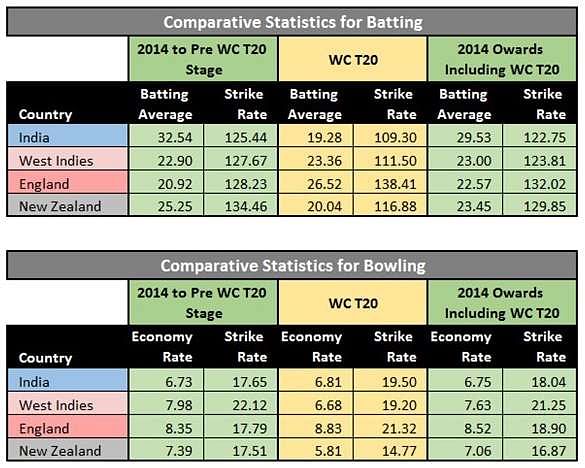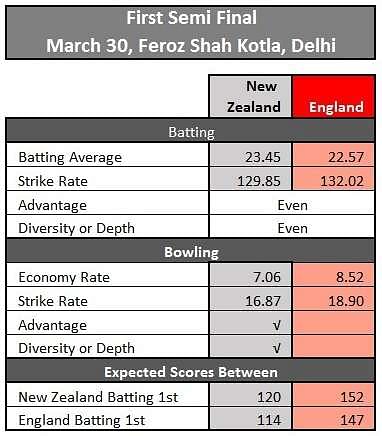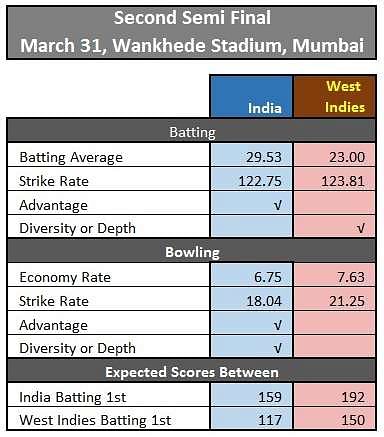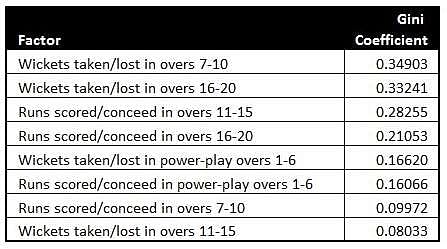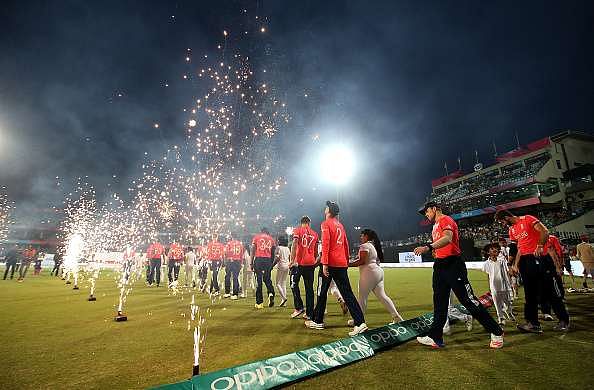
India, West Indies or England: Who has the stat advantage?
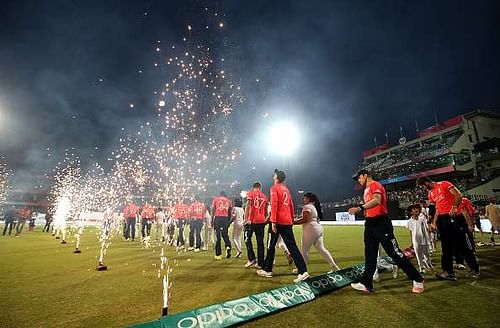
After a few days of upsets and nail-biting finishes, we have only three teams left standing in the ICC T20 World Cup. The dust has settled and we have a finalist in England after they knocked the Kiwis off their perch. And the all important upcoming semi-final between India and West Indies.
South Africa, who many would have expected to make it to the last four were eliminated in the round robins. Upsets like these are not uncommon in sports and in the T20 format, the probability of that goes up. Now, the question is whose world cup is it anyway? And does any of the team possess any significant advantage over the rest of the field.
Having watched each and every game and analyzed quite a significant amount of data, I would say that at this stage, it’s still very competitive and it could be anybody’s crown. I think it is probably worth analyzing the performance of the four teams that are in the semis and evaluate their relative strengths.
Just prior to the inaugural match of the T20 World Cup, I had performed some analysis on the performance of the players who are in the individual squads based on games played since 2014. I appended the performance in the tournament for the players from the four semi-finalist squads and calculated the composite statistics (see Chart A).
There are a couple of points that I would like to make. These are:
First of all, the batting performance of the Indian team has been sub-par which is quite evident from the dramatic drop in the batting average in T20 world cup games as compared to the historical average. Such deterioration in batting average resulted in some challenges for the Men in Blue. However, performance of a team has to follow the laws of averages and reverting to mean is natural. I expect that ‘reversion to mean’ would mean that the Indian batsmen would perform much better in the knock out stages.
The English side has shown remarkable improvement in its batting abilities. Against the Proteas, they chased down a mammoth total and scored well against West Indies and Sri Lanka. Three of their batsmen Joe Root, Jos Butler and Jason Roy have scored close to 400 runs. Also, please note that England is the only team whose strike rate has gone up during the world cup games.
Based on the batting and bowling performances, let me analyze the relative advantages of the teams in the two semi-finals.
England overcame stats and the New Zealand spinners
The first semi-final between New Zealand and England was supposed be very competitive with both the teams even (see Chart B). New Zealand though had an advantage in bowling and, with Santner and Sodhi supposedly the biggest factors for the Kiwis.
In the end, marginally better bowling was supposed to be the difference in this game. However, nobody could really foresee the blitzkrieg from Jason Roy.
The thing that worked in England's favour was that the English were playing at Feroz Shah Kotla in Delhi where they had already played two games – one against Afghanistan and the other against Sri Lanka. In the game against Sri Lanka, Rangana Herath started with a wicket maiden but England eventually scored 27 runs in his next 3 overs. And as this game finally materialized we see the English once again neutralize the spinner although Ish Sodhi did give them some jitters.
India has the advantage for the second semis
The second semi-final will be played at Wankhede Stadium in Mumbai. The wicket at Wankhede has behaved well and the matches at this location have been high scoring. I do not expect that trend to change. Based on my analysis, India has the advantage in this game both in batting and bowling (see Chart C).
One factor that is playing to India’s advantage, as well as disadvantage, is ‘Virat Kohli’. It’s no surprise that India’s batting is heavily dependent on number 18. Of the 505 runs scored by India in the 4 world cup games, Virat has scored 184 and that accounts for 36% of the runs. If we add Dhoni to this mix, 51% of the runs have been scored by these two players.
In the two games – against New Zealand and Bangladesh, when Virat did not trouble the scorers much, India was in trouble. Again, as I said before, eventually, things revert to the mean and by that count, I would expect that the other batsmen in the Indian contingent will fire in the semis.
What determines the winner in the world cup games?
I took over wise data for each game and analyzed several factors to understand if they can predict the winner. These factors along with their predictive power, as statistically measured by Gini Coefficient are outlined above in Chart D.
There are a couple of interesting observations from this analysis:
Runs scored in overs 11 and later have more predictive power in determining the winner than the runs scored in power-play. That would obviously mean that it is important to preserve wickets so that the team can take chances and score faster in the later overs.
It is not surprising that wickets taken between overs 7 and 10 and between 15 and 20 have high predictive power for the same reason stated in the prior bullet point.
Runs scored in power-play and wickets taken or lost in power play are not as important as one might think. In other words, in T20 games, morning may not show the day.
A good example is the Australia – India game where the Aussies scored 59 runs in power play for the loss of 1 wicket as compared to the Indians who scored 37 runs for the loss of 2 wickets. The Aussies were slowed down by some good bowling by the Indians and they lost the game with 5 balls to spare.
